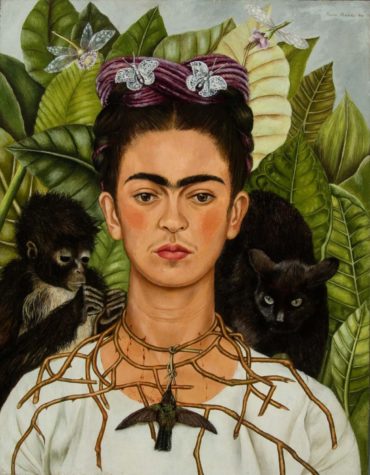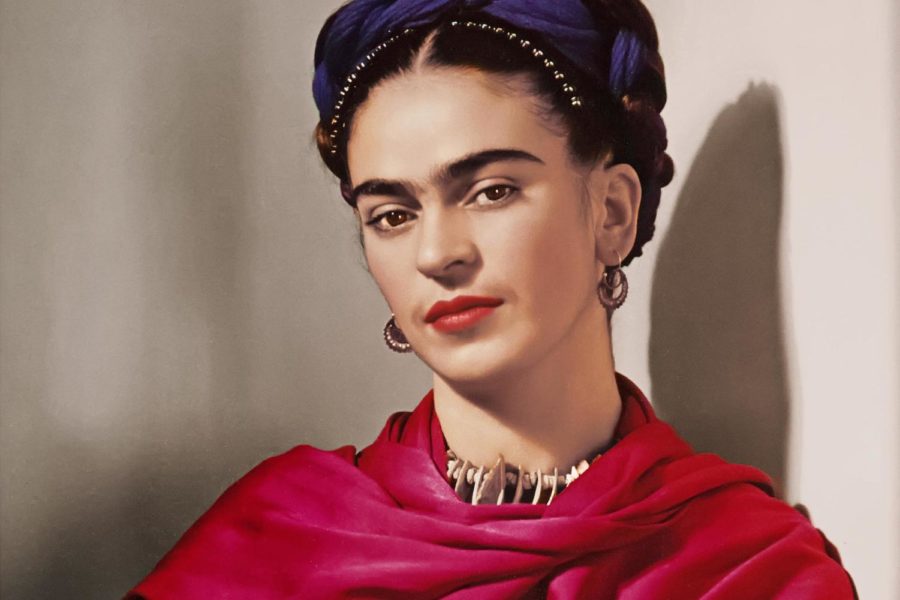Self Portraits through the lens of Frida Kahlo
February 17, 2022
Frida Kahlo was a prolific Mexican artist of the 1930s-1950s. She’s considered a staple of both Mexican culture, as well as art history as a whole. Kahlo is most often associated with her semi-surrealist portraits and self-portraits. She used the same methods as other surrealist artists, like Salvador Dali or René Magritte, to explore her physical state rather than the subconscious. Kahlo used the language of the abstract to describe concrete concepts like her body, health, and marriage, and because of this, her work provides a very interesting lens through which to view self-portraits as a whole.
There is something inherently vulnerable about self-portraits, something that requires the artist to show the viewer how one views themselves and open themselves up to a sort of voyeurism. Frida Kahlo does this beautifully, even in her early work. For example, Self portrait with necklace (1933) prominently features her eyes and neck, as much of her work does. Though her face is turned 3/4, her gaze is decidedly directed at the viewer, with a striking, stubborn flare.
Many people believe that this was a deliberate decision to show the reality of Frida’s character as she experiences herself. Communicating her strong-willed personality, defiance and the self-confidence she so obviously exhibits, as well as her pain, her love, and ultimately her humanity.
 There’s also a great deal of pride for her culture present in her work. Some critics have called her work amateur or unrefined, but this is very intentional. Kahlo has painted using realism before and if one were to look at her work from the 50s, it is obvious that she has technical skill and prowess.
There’s also a great deal of pride for her culture present in her work. Some critics have called her work amateur or unrefined, but this is very intentional. Kahlo has painted using realism before and if one were to look at her work from the 50s, it is obvious that she has technical skill and prowess.
Her simple, flat style is done in homage to indigenous Mexican folk art and by extension a way to connect to her culture and roots. This also helps to establish a deeper sense of intimacy within the painting.
A great deal of famous art is separated from the audience on some level. Whether that be because of its elusive subject matter or the nature of fame itself, which can often take away the emotional component. Regardless, Kahlo’s work isn’t like this. The style is used to bend down to the viewer’s level, to appeal to the audience’s first glance and grip them from there.
Another way in which she grips the audience is through her subversion of the beauty standard. Frida Kahlo paints firmly within her gaze and refuses to appeal to an audience. Kahlo is stubborn when it comes to the societal constructs built upon vanity. Her unibrow discredits the stigma associated with the way the female body and facial hair are perceived by the world.
Frida allows one to break free from the limited notions about what beauty can and cannot be, in this sense she is recalcitrant and respectable for being as such. Overall, her self-portraits as well as her other art have contributed largely to the art world and are great examples to look to.

